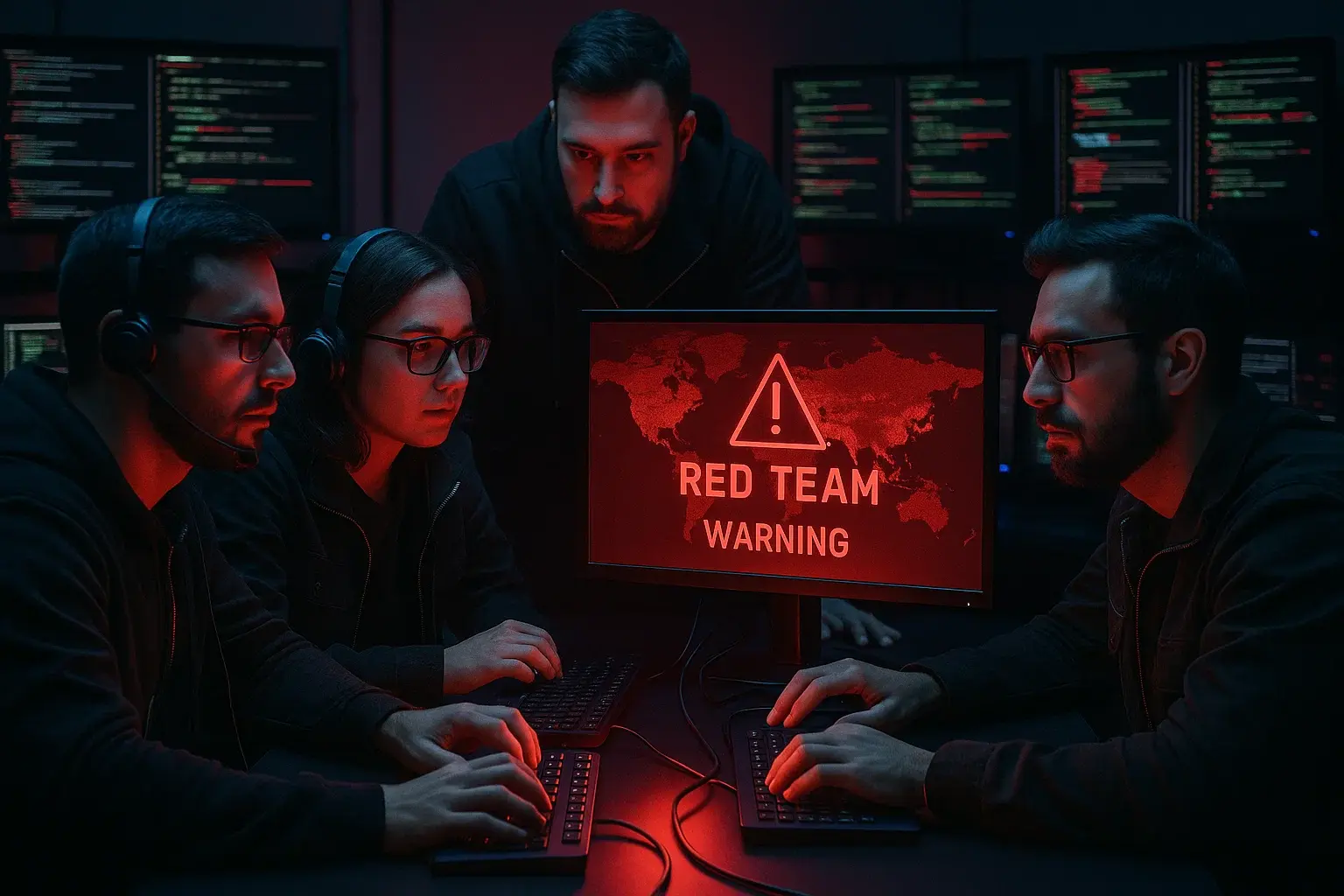As someone responsible for security or leadership in your organization, you may wonder if vulnerability scans or penetration tests are enough. The reality is that a Red Team assessment goes further: it simulates real cyberattacks—without your defensive team knowing—in order to thoroughly evaluate how you respond to actual threats. Here, I’ll explain what it is, how it works, and the concrete benefits you can expect.
What Exactly Is a Red Team Assessment?
A Red Team is made up of offensive cybersecurity experts who simulate real-world attacks against your organization. It’s not just about finding technical vulnerabilities but about acting like a real attacker: assessing technology, people, and processes to measure your true defense capabilities.
While a penetration test focuses on a specific target (an app, an IP address, etc.) with a limited scope, a Red Team assessment examines the entire organization with broader objectives, all without your defensive team knowing about it.
Key Characteristics of a Red Team Exercise
Realistic Simulation
The team simulates a cyberattack as if it were real, including scenarios such as ransomware or data exfiltration, designed to test your level of response.
Stealth and Concealment
During the assessment, your defensive systems (Blue Team) are unaware they’re being tested. Only designated leaders — the White Team — know the operation is taking place.
Comprehensive Scope
Unlike penetration testing, which is limited to specific areas, a Red Team can attack any asset in your company within the agreed scope, offering maximum flexibility.
Extended Duration
Because of its broader objectives and stealth approach, a Red Team exercise often lasts weeks or even months, depending on the scenarios tested.
How Does a Red Team Assessment Work? Step-by-Step Methodology
A Red Team assessment typically follows methodologies aligned with frameworks like MITRE ATT&CK, TIBER‑EU, or DORA, ensuring realistic and regulatory-compliant testing.
Learn more: Alert in Mexico: Virus Redirects to Fake SAT and Bank Sites
Typical Phases:
Intelligence and Reconnaissance
Gathering public and technical information about your organization: domains, networks, key personnel, vendors, and social media.
Weakness Detection
Identifying technical vulnerabilities, insider weaknesses, or third-party supply chain risks.
Initial Exploitation
Using vulnerabilities to gain entry, such as phishing, weak credentials, or web application flaws.
Lateral Movement
Moving within your internal network while staying hidden and expanding access.
Privilege Escalation
Gaining full control of critical systems by escalating user privileges.
Persistence
Installing covert access methods (backdoors, persistence mechanisms) to maintain presence and achieve objectives such as stealing data, deploying ransomware, or sabotaging systems.
Analysis and Reporting
Documenting detections, response times, and gaps in your controls, followed by a tailored improvement plan focused on technology, people, and processes.
Red Team vs. Penetration Testing: Which Do You Need?
|
Aspect |
Penetration Test |
Red Team Assessment |
|
Scope |
Limited to specific assets |
Entire organization |
|
Defender Awareness |
Yes – defenders informed |
No – defenders unaware of the exercise |
|
Objectives |
Identify specific vulnerabilities |
Compromise continuity or critical data |
|
Duration |
Days or weeks |
Weeks or months |
|
Focus |
Technical, surface-level |
Offensive, strategic, and in-depth |
A Red Team assessment evaluates your global defense capabilities against real threats. If you only need a surface-level test, a penetration test may suffice. But if you want to measure true resilience, a Red Team assessment is the right choice.
You might also be interested in: Hackers Use Microsoft Teams to Spread Matanbuchus 3.0 Malware
Why Is It Important for You?
Understanding Your Real Risk
It gives you a realistic understanding of risk: not only technical vulnerabilities, but also how an adversary could actually act against your organization.
Improving Detection and Response
It evaluates how your Blue Team reacts to a real attack, improving their ability to detect, contain, and recover from incidents.
Meeting Regulatory Requirements
Frameworks like DORA, TIBER‑EU, or TLPT mandate periodic Red Team assessments, especially in finance or critical infrastructure sectors.
Strengthening Organizational Resilience
It helps you identify technological weaknesses, human errors, or process gaps and provides concrete actions to fix them.
Training Your Internal Team
Your Blue Team gains hands-on experience by unknowingly facing a simulated attack, making training highly effective.
Read more: 7 Common Pentesting Mistakes and How to Avoid Them
When Should You Consider a Red Team Assessment?
You should consider it if:
- Your organization handles critical or sensitive data.
- You operate under regulations such as DORA, TIBER‑EU, or similar frameworks.
- You want to improve detection, response, and resilience to advanced attacks.
- Your company has suffered security incidents or fears being targeted by persistent threats.
How to Prepare: Recommendations Before the Exercise
To get the most out of the assessment, you should:
- Clearly define objectives and boundaries with the Red Team.
- Inform the White Team (executives or security leads).
- Decide which assets, if any, should be excluded to avoid unwanted disruptions.
- Plan execution times to minimize operational impact.
- Align expectations on the types of attacks simulated and results expected.
After the Exercise: The True Value Is in the Analysis
Once the exercise is complete, you’ll receive a detailed report that includes:
- Identified weaknesses in technology, teams, and processes.
- Detection and response times.
- Attack scenarios and techniques used.
- Impact analysis and risk assessment.
- Prioritized recommendations: technical, training, and process improvements.
This improvement plan becomes your roadmap to a stronger security posture.
Conclusion
A Red Team assessment is your opportunity to discover not only whether you’re protected against technical attacks, but also whether you can truly respond and keep your business running during real threats.
It’s a strategic investment in resilience, regulatory compliance, internal training, and a global risk perspective. Currently, cybercriminals are constantly evolving, preparing proactively is no longer optional — it’s essential.


